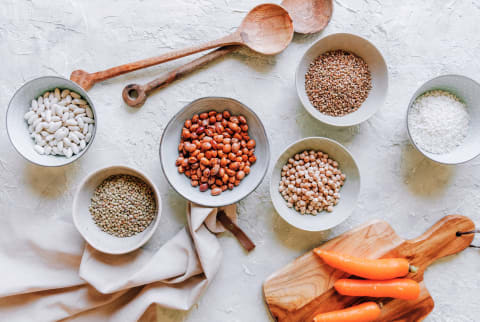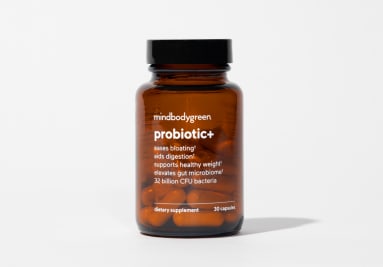How To Effectively Add More Prebiotics To Your Diet — Without Any Unwanted Effects



Prebiotics, not to be confused with probiotics, are a type of fiber that feed your good gut bacteria and help increase your gut bacterial diversity.* Just like us, the bacteria in the gut need fuel in order to survive, and their preferred source is prebiotic fiber.
What are prebiotics & why do you need them?
Prebiotics are nondigestible fibers that ferment in the colon. When the probiotic bacteria in your gut consume these fibers, they then produce unique nutritional metabolites like short-chain fatty acids that are beneficial to overall health.* Prebiotics also help with mineral and nutrient absorption and maintaining a healthy balance in the gut.*
It is important to note that all prebiotics are fiber, but not all fibrous foods are prebiotic. Fiber has other benefits in the gut, but prebiotic fiber specifically shows benefits relating to your gut bacteria.* Without prebiotic fiber, the bacteria in the gut cannot thrive—and over time, less bacterial diversity can lead to other unwanted impacts (like increased bloating and gas).*
Some foods that contain prebiotics include:
- Agave
- Chicory root
- Flaxseed
- Garlic
- Jerusalem artichoke
- Legumes (beans, chickpeas, lentils, soybeans)
- Nuts such as cashews and pistachios
- Onions, leeks, shallots, scallions
- Wheat products, such as cereal
- Fennel
- Asparagus
How to strategically incorporate more prebiotic foods.
Because these fibers are highly fermentable, initially adding more prebiotic foods to your diet may temporarily contribute to gas or bloating—which can be a deterrent for some people. However, instead of completely avoiding these super beneficial foods, there are some strategic ways to incorporate them.
Just like you wouldn't go to the gym after six months off and aim for a personal record, the same applies to prebiotics. "Low and slow" is the motto.
Based on my experience as a dietitian, here are some go-to ways to include prebiotics, without the unwanted effects:
- Start slow. Take asparagus, for example. Instead of filling your entire plate with asparagus, try one to two asparagus in addition to your full meal to allow your gut to adjust to this food. If you tolerate it, next time, add three to four, etc.
- Consume one new thing at a time. If you have trouble digesting prebiotic or higher fiber foods, try one new thing at a time to allow your system to adjust.
- Try roasting, steaming, and cooking the prebiotic vegetables. Well cooked is always way easier to digest than raw.
- Try fermented forms of wheat. Instead of including a slice of whole-grain bread, include a slice of sprouted or sourdough, which is typically much easier to digest.
- Try resistant starch first. Resistant starch occurs when you cook and cool starchy foods like potatoes and rice. Cook your potatoes, cool them to room temperature, and then consume them. You can even reheat them while still maintaining the benefits. Resistant starch, although not an actual prebiotic, acts like a prebiotic and is typically more tolerable.
- Include polyphenol-rich foods. Try cranberries, pomegranates, blueberries, cocoa, cloves, and green tea. Similar to resistant starch, although polyphenols are not technically considered a prebiotic, they have similar benefits in the gut.*
Bottom line.
It's so beneficial to your gut and overall health to make prebiotics a consistent part of your diet.* Just remember to take things slow, and allow your digestive system to adjust when you first add more to your lifestyle. If you follow these simple strategies, the transition should be relatively seamless, and you'll be well on your way to better gut health.*

Heather Finley, D.C.N., M.S., R.D. is a Registered Dietitian and gut health expert. After spending 2 decades of her life struggling with her own digestive issues she now uses her life’s biggest struggle to empower others to find the same relief that she has found. Heather utilizes a functional and integrative approach to digestive health that focuses on helping clients to address the root causes of their symptoms and address them in a sustainable way without tons of long term restrictions. In addition to seeing clients in her gutTogether(™) program, she also mentors other RD’s and health practitioners in her gutPractitioner program. In her spare time you can find her exploring the farmers market on a Saturday with her family, finding new places to hike, or cooking up something new and interesting in her kitchen! You can find more information about Dr. Heather at https://www.drheatherfinley.co/ or on Instagram.

